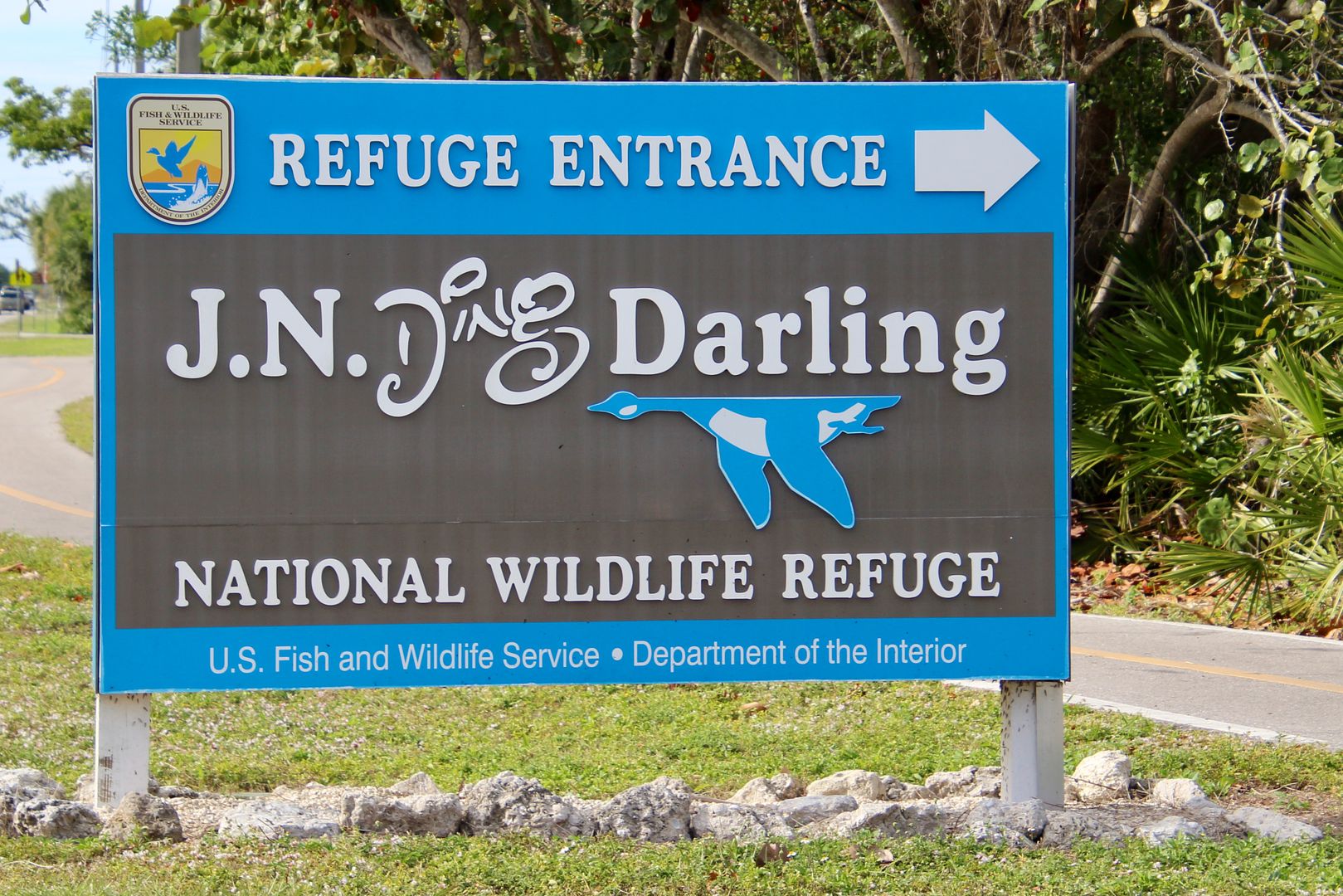Jay Norwood “Ding” Darling was a pioneer conservationist that was instrumental in getting 6,400 acres set aside to protect endangered and threatened species on Sanibel, a subtropical island.
President Truman authorized the Sanibel National Wildlife Refuge in 1945 because of the spectacular migratory bird population. Plumes were in such high demand (particularly in Europe) where an ounce of feathers sold for double the cost of an ounce of gold! Renamed in 1967 to the J.N. “Ding” Darling NWR, the refuge provides safety for nesting and roosting birds from development and hunters. First, we went to the Visitor and Education Center (be sure to check it out if you visit the refuge).
Since I have been here several times, we just did a quick walk through. An interesting display is of Ding Darling’s studio (with original furnishings).
We picked up a map and headed out on Indigo Trail (begins right next to the Visitor Center) with our sweet doggie, Sadie. Leashed dogs are permitted on the trail and along Wildlife Drive.
A portion of the trail is a boardwalk through a mangrove forest. The trail continues along a road to the an observation tower.
In addition to several birds (little blue heron, great egret, and osprey) we spotted an alligator here.
Several displays showed animal scat (poop!) When you lifted the top, it identified the associated mammal (whose scat it was). Here’s one of them. I found them to be very educational (John thought they were a little strange).
We returned to our car to begin the Wildlife Drive. Our first stop was along Tarpon Bay to see the flocks of birds in the distance in the water.
I always enjoy seeing the mangrove tree crabs at the Mangrove Overlook. They are mix of something creepy but fascinating to me.
Continuing on the Drive, we stopped to snap some photos of some of the beautiful birds we saw along the way.
We only saw a few of these, but roseate spoonbills are my favorite!
Admission to the Wildlife Drive is a $5/vehicle (but our National Park Service Senior Pass got us in for free). Tram tours (90 minutes) are also offered with a naturalist guide. Hikers and bicyclists are charged $1/person. It is best to visit at low tide. For additional information about the refuge go to www.fws.gov/refuge/JN_Ding_Darling/visit/plan_your_visit.html.

No comments:
Post a Comment